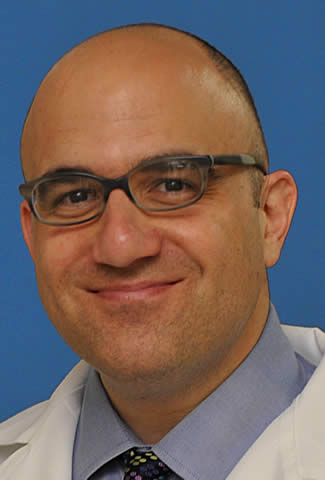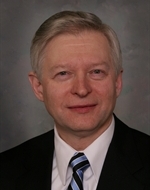|
THE SCIENCE OF CONSCIOUSNESS April 25-30, 2016 - Tucson Pre-Conference Workshop Tuesday, April 26, 9 am-1 pm
Using General Anesthetics to Study Consciousness George Mashour, MD Dinesh Pal UnCheol Lee Anthony G. Hudetz Travis Craddock Co-Chair, 2016 TSC
Anesthetic vapors and drugs selectively prevent consciousness while sparing non-conscious brain functions, offering specific tools to identify those brain activities necessary for consciousness. One hypothesis is that anesthetics prevent the brain from integrating information associated with sensory input, internal signals, voluntary action, and others. Anesthetic ‘disintegration’ may result from functionally disconnecting brain regions, distorting content of transmitted information, or fragmenting its temporal organization. Using EEG and fMRI, George Mashour and Uncheol Lee will discuss information disintegration in humans, Anthony Hudetz in animals, and Dinesh Pal in sleep. The group is from the Center for Consciousness Science at the University of Michigan. Insight into the mechanism of consciousness can be obtained by manipulating its level. The most common and reproducible approach to modulating the level of consciousness is by the use of anesthetic agents carefully dosed to levels just before and after loss or return of consciousness. Through this and the complementary approach of studying sleep, we can identify the neural events that are closely associated with a conscious state transition. One of the hypotheses currently being tested is that anesthetics suppress consciousness by preventing the brain from integrating information associated with sensory input, internal signals, voluntary action, and others. This disintegration effect of anesthetics may be a common mechanism of other unconscious states such as sleep, coma, and seizure. Disintegration may be the result of functionally disconnecting specialized brain regions from each other, distorting the content of the transmitted information, or fragmenting the temporal organization of neuronal activity. Empirical evidence from electrophysiological and fMRI experiments in animals and humans will be presented to support this claim. Two important questions will be discussed in the workshop: 1) how is spatially distributed information integrated and disintegrated in the brain? 2) how do the integrated and disintegrated states naturally transition to one another? Current brain connectome projects are attempting to construct a map of the structural and functional network connections in the brain. However, because of the limitation of constructing all brain maps for all cognitive states, it is crucial to find a principled relationship of network structure, local dynamics and information transfer in a network. Using analytical, computational, and empirical data analysis, we will describe how the patterns of global information are reconfigured during general anesthesia and will discuss the conditions for state transition between consciousness and unconsciousness.
Schedule: George A. Mashour Introduction Dinesh Pal Sleep-Wake Neurobiology and General Anesthesia Anthony G. Hudetz General Anesthesia and Information Disintegration—Animal Studies UnCheol Lee General Anesthesia and Information Disintegration—Human Studies Travis Craddock Anesthetic Interactions with the Microtubule Cytoskeleton: Implications for the Side Effects and Mechanism of General Anesthesia George A. Mashour Summary and Moderate Q&A
Bios: George Mashour Founder, Center for Consciousness Science University of Michigan, Ann Arbor
GEORGE A. MASHOUR, M.D., Ph.D. is an anesthesiologist and neuroscientist who founded and directs the multidisciplinary Center for Consciousness Science at the University of Michigan Medical School. Mashour’s primary scholarly interest is in consciousness and anesthesia. In his clinical research he studies intraoperative awareness and has conducted several major randomized controlled trials on brain monitoring. In his laboratory he investigates the mechanisms of unconsciousness during general anesthesia and sleep. Finally, his computational research group explores network science approaches to consciousness and unconsciousness. Mashour’s research is funded by the National Institutes of Health and the James S. McDonnell Foundation.
DINESH PAL, Ph.D. is a neurobiologist and is currently a Research Assistant Professor in the Department of Anesthesiology at the University of Michigan. His primary research interests are sleep neurobiology, neurobiology of general anesthesia, and sleep-anesthesia interfaces. He is conducting preclinical studies using simultaneous electroencephalographic recordings and in vivo electrochemical measurement of brain neurotransmitter levels to identify correlates and mechanistic links to the anesthetic induced unconsciousness. In addition, Dr. Pal is also conducting studies using electroencephalographic recordings and neuropharmacological interventions to test the hypothesis that sleep and anesthesia may have common underpinnings . Dinesh Pal will also speak at Concurrent Session 20 Ketamine and Anesthetics on Friday April 29 at 5:00 PM
UNCHEOL LEE Ph.D. is a physicist studying complex systems and consciousness, and is currently a research assistant professor in the Department of Anesthesiology, the associate director of the Center for Consciousness Science at the University of Michigan Medical School. UnCheol’s main research interest is to find a principled mechanism of the brain to integrate and disintegrate information in the whole brain network. He has been studying the mathematical relationship between information flow, network topology and state of consciousness in conjunction with human EEG analysis during anesthetic state transitions. His recent interest is to find a mathematical principle for diverse state transitions, ‘gradual and abrupt returns of consciousness, in the large-scale brain network level, and to predict the critical point of emerging information integration capacity from unconscious state.
ANTHONY HUDETZ, DBM, PhD is Professor of Anesthesiology and Director of Laboratory Science in the Department of Anesthesiology, University of Michigan, Ann Arbor. He is also the Scientific Director of the Center for Consciousness Science, University of Michigan, Ann Arbor Anthony G. Hudetz, will also speak at Plenary Session 9 "Pribram Session" - Brain Dynamics on Friday April 28 at 2:00 PM
TRAVIS CRADDOCK, PhD Travis Craddock will also speak at the Workshop on Quantum Biology on memory encoding in microtubules on Monday morning, April 25, 2016 at 9:00 AM
Return to Online Registration / Payment System Link
Early Workshop Fees: TSC General Registrants $60 half day TSC Student Registrants $40 half day General Public - Workshop only $125 half day General Public - Student - Workshop only $75 half day
|
|
|||||||||||||





